-
Fun Ideas for Improving Language Comprehension
Children begin working on their language skills as soon as they’re born. By the time they reach pre-kindergarten age, at about four years of age, children are getting ready to learn how to read. At this stage, pre-k teachers in Pembroke Pines focus on improving their students’ verbal language comprehension, which is crucial for early literacy. Talk to your child’s teacher about the language comprehension activities being used in the classroom, and ask about the activities you can do at home with your child.
Act out scenes in books.
If you aren’t already reading to your child daily, you should start right away. Pre-k students need intensive and ongoing exposure to reading materials, as this early exposure sets a foundation for literacy. In addition to reading aloud to your child every day, you can encourage him or her to dramatize the stories. Use hand puppets, dolls, or stuffed animals to act out scenes with the various characters. Children tend to ask for their favorite book to be read to them over and over again. Use your child’s intimate knowledge of his or her favorite story. Ask your child to tell you the story, using a puppet or doll as a prop. He or she probably won’t recite it line-for-line, but getting the gist of the story right is a sign of comprehension.
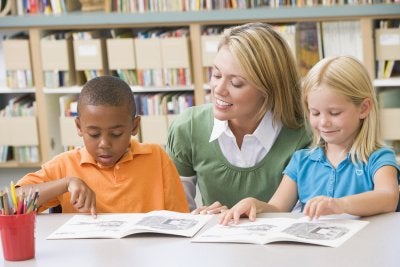
Relate ideas in books to real-life encounters.
Pre-kindergarten teachers recommend discussing books and asking questions as you read them with your child. One approach you can use is to compare items or characters in the book to your child’s own experiences. For instance, you could say, “Look at that giraffe. Didn’t we see one like that at the zoo?” or “ Frances sure does like bread and jam . What’s your favorite thing to spread on toast?”
Play Simon Says.
Not all language comprehension activities start with a good book. Children in pre-kindergarten classes can start learning how to handle two-step directions. You can help your child work on his or her comprehension of multi-step directions by playing Simon Says. Start with easier directions such as, “Take two steps forward and then one step backward.” Then, progress to directions with more complex vocabulary words, such as “Touch your elbow and make a joyful face.”
-
Letter Recognition Tips for Parents of Pre-K Kids
Is your pre-k child being introduced to the alphabet in school? If so, then as a parent, you’re probably eager to support your student along his path to reading literacy. If you’re wondering what you can do to help your child in pre-kindergarten in Pembroke Pines with letter recognition, then read on for some tips to try.
Focus on His Favorites
When it comes to helping your pre-k student enjoy the process of learning how to recognize letters, starting with the letters that spell some of his favorite words can be a great strategy for sparking his enthusiasm. Many parents find that their child’s name is a good place to begin. Other words to consider focusing on include his favorite color, food, activity, and animal.
Turn Letters into Artwork
Making letters into something more artistic and tangible is another way to engage your child in the letter recognition learning process, and one way to do this is to turn letter recognition practice into an art activity. So, consider bringing out the finger paint and paper and letting your student draw the letters that he is learning.
Integrate Learning into Daily Life
Helping your child with letter recognition outside of school does not require that you set up special activities. After all, there are letters all around your home and community. Because of this, you can turn everyday tasks like reading the newspaper in the morning or buying food at the grocery store into opportunities to help your child recognize letters.
Try a 3-Dimensional Approach
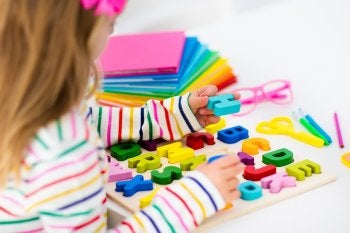
Finally, one more excellent way to help your pre-kindergarten student with his ability to recognize the letters of the alphabet is to provide him with a 3-dimensional perspective. To do this, simply toss some letter shapes, for example, the magnetized kind that you may have on your refrigerator, into a bag. Try starting out with 4 or 5 of the letters that your student is learning and then encourage him to identify each one while feeling them in the bag instead of looking at them.
-
Motor Skill Milestones in Pre-K
Kids in pre-K go through an amazing number of transitions that always amaze parents. In particular, kids in this age group reach a number of important milestones with their motor skills. If your child is enrolled in pre-K in Pembroke Pines, keep an eye out for these exciting developmental changes.
Both gross and fine motor skills take a leap in pre-K. In terms of gross motor skills, kids learn to control their running more precisely, including stopping and turning more gracefully. Kids at this age learn to hop on one foot, do somersaults, and bounce, catch, and throw a ball. Parents are also thrilled to discover that their kids can now brush their teeth, comb their hair, and dress themselves without help. Fine motor skill development in pre-K includes learning to print letters, cutting on a line, and using utensils appropriately. Copying shapes, like crosses and squares, also becomes easy.
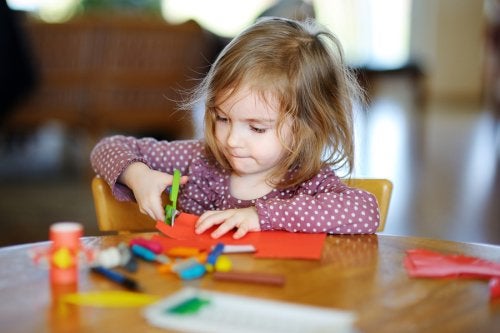
-
Spotlight on Social and Emotional Development in Pre-K Students
Your rising pre-kindergartener will make some important strides this upcoming school year. Pre-kindergarten programs in Pembroke Pines lay a foundation for both academic success and socio-emotional growth. No two kids progress at the same rate, but in general, you can expect your four-or five-year-old pre-k student to exhibit greater independence in social situations. At the same time, your child may want to please his or her friends and fit in with them.
Pre-k students usually separate more easily from parents, as they grow closer to their teachers and other trusted adults. They may also take the initiative in social situations, such as by suggesting a fun activity, engaging in complex pretend play, and offering to share with a friend. As your child acquires greater mastery with academic skills and self-care abilities, his or her self-esteem will flourish. You’ll start to notice your child using more complex language to express feelings. Although your child will develop better coping skills, he or she will still seek adult guidance when emotions become overwhelming.
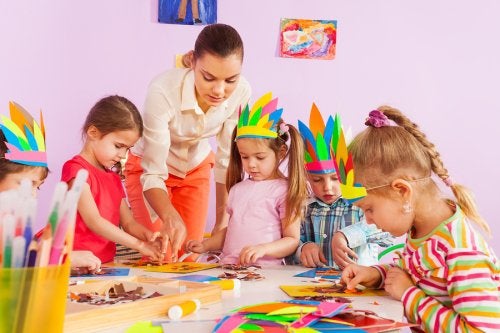
-
Milestones That Your Child May Meet in Pre-K
Pre-Kindergarten, or pre-K, is often a subject of confusion for parents. It is not the same thing as preschool but rather is a targeted program designed specifically for children about to enter the Kindergarten classroom. Most students in pre-K programs in Pembroke Pines are around four years of age. Pre-K is voluntary—which is why it is sometimes referred to as VPK—but it can have a tremendous impact on children as they prepare to succeed in Kindergarten. Although every child is different, if you choose to enroll your child in pre-K, here are some of the milestones he or she may achieve.
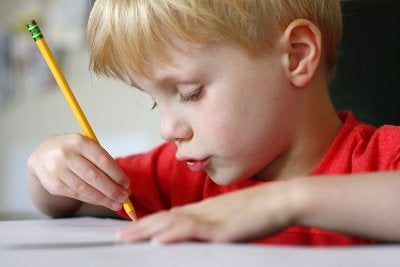
Language and Literacy
Children usually enter pre-K with a vocabulary of about 1,500 words, but by the end of the year, most children speak fluently and can usually use the proper tenses, pronouns, and plurals. Most children also learn to print at least some of their letters in pre-K. In addition to becoming more masterful with language, children also tend to embrace using it more and delight in telling stories or having conversations.
Cognitive Development
During pre-K, children make great strides with their problem-solving skills and can use them for everything from figuring out how to open a favorite snack to working through the rules of a game. Children often also learn to count to at least 10 and may also begin to understand basic concepts about money.
Social Development
For many parents of pre-K kids, social development is one of the areas that is most dramatic. At this age, children become much more invested in their friendships with each other, and they may seek out specific peer groups within the class to spend time with both on the school playground and on the weekends during play dates. At this age, children also become cognizant of fitting in with their classmates and may also begin to seek praise from both parents and peers. Pre-K kids also understand the differences between wrong and right and being honest or dishonest.
-
Choosing Educational Toys for Pre-K Kids
Toys can be a fun distraction for children, but they can also be educational and support their development. Is your child currently in pre-kindergarten in Pembroke Pines ? If so, then she is probably experimenting with her developing physical skills, asking many questions, and displaying a longer attention span. Continue reading for tips on selecting educational toys that can support your child’s education at this age.
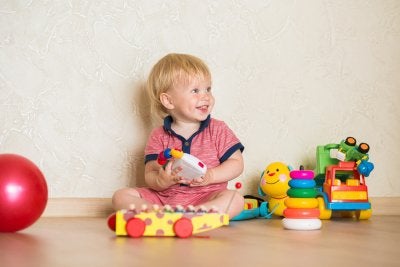
Pick Toys That Allow Her to Create
Encouraging your child’s creativity is an excellent way to help her learn and develop. For this reason, you should look for toys that give your child something to create with. Some great examples of creative materials to offer your pre-k student are colored construction paper, crayons, markers, paintbrushes, finger paint, scissors made for children, scraps of cloth, paste, playdough, and chalk.
Choose Toys That Encourage Problem-Solving
At this age, you can support your child’s education and development by providing her with toys that demand problem-solving skills. Puzzles with 12 or more pieces and collections of objects that can be sorted in various ways, such as by color, size, quantity, and shape, are great educational toys for children in pre-k. You might offer her colored blocks, different sized bowls, and everyday items from around the house for these activities.
Select Picture Books That Are More Advanced
Now is the time to make the step up from the picture books that your child loved as a preschooler. As you peruse your options, choose books for your pre-k kid that have fewer pictures and more words than she is accustomed to.
Opt for Toys That Help Your Child Play Pretend
At this stage in her development, you can help your child by providing her with toys that encourage and help her to play pretend and stimulate her imagination. Consider giving your kid child-sized furniture, play food and appliances, dolls or stuffed animals to accessorize, dress-up clothes, puppets, construction sets, and blocks for building structures.
-
Easy Tips for Improving Attention Spans in Pre-K Students
Attention is a challenging issue for parents and teachers of pre-K students alike. In the pre-K classroom, working on attention spans is part of the learning process, as students become more adept at learning the differences between work time and playtime. Attention span issues can be even more challenging today, when young children are accustomed to entertainment with digital devices and constant distractions. Although the ability to be attentive naturally increases with age, there are things you can do to help your student in pre-K in Pembroke Pines . Try these tips to boost the attention span of your pre-K student.
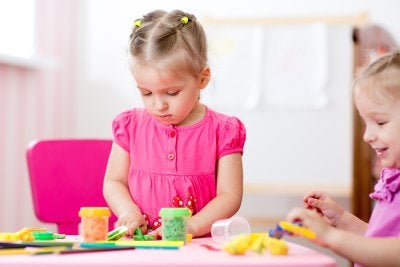
Reduce Distractions
Nearly anything can be a distraction when a young student is tackling a task he or she may not really want to do. Before your child has to concentrate on something, make sure he or she is well rested, not hungry or thirsty, and has used the bathroom. Don’t have the TV or music on, and keep digital devices tucked away. Give your child space and time to concentrate on one thing, and he or she will become more adept at tuning his or her attention to the right things.
Get Ready for the Day
If your child’s attention problems occur most often in the pre-K classroom, make sure he or she is ready for the day when you arrive at school. Avoid showing DVDs in the car, and eat breakfast at home when possible, instead of on the go. Put shoes on at home, rather than in the car. The ride to school should be a calm time when you can help your child focus on getting ready for school. Watching a DVD while frantically eating breakfast and rushing to finish getting dressed in the car will result in your child arriving at school feeling anxious and exasperated instead of ready to sit down in the classroom.
Have Realistic Expectations
As a general rule of thumb, the number of minutes your child should be able to pay attention is his or her age in years multiplied by two to five . Anything outside of that is unrealistic. Try breaking tasks up into timed chunks that fit into these windows so your child doesn’t become frustrated, which negatively impacts attention spans.
-
Developmental Milestones in Four-Year-Olds
Four is an exciting year for parents and children alike. Four-year-olds are eagerly embracing their newfound independence and they are actively developing the skills they will need in kindergarten and beyond. You’ll begin to see your child take on a more clearly defined personality as he or she progresses through pre-kindergarten . Consider talking to your child’s pre-k teacher in Pembroke Pines about ways of supporting your child’s healthy development at home.
Motor Skills
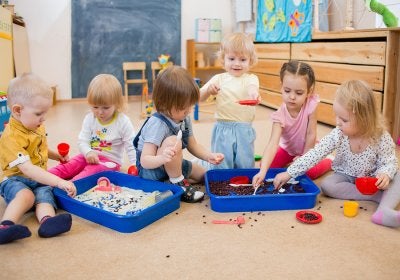 Pre-k kids are working on both gross and fine motor skills. In fact, parents are often amazed at the boundless energy of their four-year-olds. A four-year-old should generally be able to balance briefly on one foot, hop on one foot, and walk up the stairs without assistance. As pre-k kids progress toward their fifth birthdays, they begin to try new skills like somersaulting, climbing, swinging, and skipping. Fine motor skills become much more developed during this year. Your child should be able to print some letters, use cutlery, copy geometric patterns, and get dressed and undressed without assistance.
Pre-k kids are working on both gross and fine motor skills. In fact, parents are often amazed at the boundless energy of their four-year-olds. A four-year-old should generally be able to balance briefly on one foot, hop on one foot, and walk up the stairs without assistance. As pre-k kids progress toward their fifth birthdays, they begin to try new skills like somersaulting, climbing, swinging, and skipping. Fine motor skills become much more developed during this year. Your child should be able to print some letters, use cutlery, copy geometric patterns, and get dressed and undressed without assistance.Language Use
You might notice that your four-year-old eagerly looks forward to story time. He or she may even begin recalling parts of a story on his or her own. During this year, he or she should begin speaking sentences longer than five words, use the future tense, and clearly speak his or her name and address.
Cognitive Development
Pre-kindergarten programs guide children in learning the essential skills they’ll need later on, including pre-math skills. During this year, your child should be able to name at least four colors and he or she should have a general understanding of the passage of time. Your child should be able to count 10 or more objects.
Socio-Emotional Development
One major benefit of high-quality pre-k programs is the social skills that kids acquire. Your child will enjoy spending time with friends. He or she will adjust to the idea of cooperative and group play. Your child may be very interested in fantasy play, but in many cases he or she will know how to distinguish reality from fantasy.
-
What Do Children Learn in Pre-K Programs
Pre-kindergarten , also called pre-k, is an essential period of education and interaction in every child’s life. By attending a qualified pre-k program in Pembroke Pines, children can learn a variety of necessary skills and subjects that will positively influence their future education and social interactions. If you have ever been curious about what children learn in their pre-k programs, speak with a pre-k school near you and continue reading to learn more.
Love of Learning
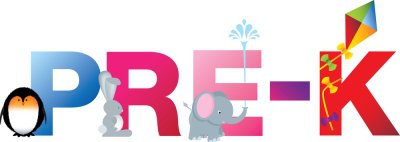 One of the most important learning skills children can learn with pre-k is a love of learning. Pre-kindergarten teachers are trained in making learning exciting. They can show children the adventure found when trying to discover something new. As children experience this excitement and thrill, they are learning skills to help with future reading, math, and history subjects. When children can associate learning with fun and excitement, they are more likely to enjoy learning as they continue through school.
One of the most important learning skills children can learn with pre-k is a love of learning. Pre-kindergarten teachers are trained in making learning exciting. They can show children the adventure found when trying to discover something new. As children experience this excitement and thrill, they are learning skills to help with future reading, math, and history subjects. When children can associate learning with fun and excitement, they are more likely to enjoy learning as they continue through school.Teamwork and Independence
Though the two terms, teamwork and independence, are contradictory, they are both important skills children learn in their pre-kindergarten class. Up until the pre-kindergarten age, usually 4 years old, many children may not have had much interaction with other children. Some children have only relied on their parents to do most chores for them. By attending pre-k, children can learn two valuable skills needed to get through life. They can learn how to play and work well with their peers. They can also learn how to clean up their messes or finish a project by themselves.
Early Subject Skills
Many parents enroll their children in a pre-k program because it gives the children a head start in learning necessary subject skills. Children will learn, in fun and engaging ways, about the early concepts of reading, math, and language. They are often exposed to earth science, art, music, and simple history. As children learn these pre-academic skills, they can enter kindergarten and grade school better equipped to learn harder concepts.
-
Teaching Your Child to Tie Shoes
Parents looking for an early childhood learning center in Pembroke Pines may also be looking for ways to teach their child new tasks. How to tie shoes is a part of early childhood education that most children learn around the time they are in pre-k or kindergarten . Watch this video for a way to teach your child to tie shoes.
One shoe-tying method is called loop, swoop, and pull. Begin by tying a knot. Next, loop one of the laces together and pinch it between the fingers of one hand. Then, swoop the second lace around the loop and tuck it into the space beneath the loop. Lastly, pull the lace that you swooped through the hole beneath the loop. Tug each of the two loops tight, and you’re done!
RECENT POSTS
categories
- Uncategorized
- Early Learning Center
- Pre-K
- Children
- Child Care Center
- Preschooler
- Preschool Blog Category | Tanglewood Academy
- Preschool Lunch
- Tanglewood Academy
- After-School Program
- Toddler School
- Early Childhood Education
- preschool activities
- pre-kindergarten
- childhood education
- pre-kindergarten programs
- Children’s education
- enrichment opportunities
- Kindergarten
- Nurturing Education Environment
- Toddler Care
- Child Separation Anxiety
- Toddlers
- Summer camp
- summer activities
- VPK
- Voluntary Pre-K
- Outdoor Activities
- Smart Strategies
- Tie Shoes
- Snacks
- Physical Activities
- Education
- Enrichment Activities for Kids
- Early Education Activities
- Preschool Curriculum
- Classroom Learning
- APPLE accreditation
- Language Comprehension
